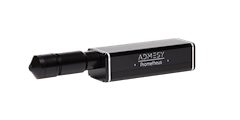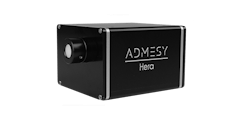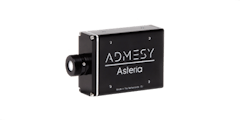Transmission Measurements
Color and optical variations occur in the production process of for example plastic foils, coated glass or phosphor plates due to small variations in compounds, process, characteristics or layer thickness. Often color changes can also be used as an efficient way to control the production process or for example layer thickness of a coating. A stabilized and controlled light source as the Admesy Steropes teamed up with one of our spectrometers, colorimeters or light meters makes the ideal combination to measure translucent substances for a wide range of applications, including liquids by means of cuvettes. Admesy offers solutions for three types of transmission measurements:
- Spectral transmission properties of materials to determine transmissive response for each individual wavelength.
- Color measurement of materials by means of a colorimeter or spectrometer.
- Optical density to measure the amount of light absorbed and transmitted through a material.
| Neo & Crius | Hera & Steropes | Asteria & Steropes | |
|---|---|---|---|
| Spectral analysis | yes | yes | |
| Color analysis | yes | yes | |
| Luminance | yes | yes | yes |
| High density [OD] | yes |
How are you measuring?
With fibers and other accessories even more type of measurements are possible. Often used accessories are integrating spheres, cuvettes for fluids, light sources or filter holders.
A cosine corrector collects the light from the half space under 180 degrees. A typical application is the illuminance measurement of a lighting situation.
Consumers are used to enjoy top-quality displays in their mobile phones, tablets, laptops and even cars. Emerging technologies such as lighting surfaces for office and home illumination are expected to look equally perfect. Both displays and luminous surfaces are the main application areas for imaging colorimeters.
Measuring the luminance or color values at a specific location of the device under test is a typical use case when measuring displays. It can, however, also be meaningful to assess reflected light.
Viewfinder Spectrometer

Standard lens 1.2° spot ⌀ 4.56 mm ‑ 6.71 m
Viewfinder Spectrometer

Close up lens 0.75° spot ⌀ 0.96 ‑ 1.47 mm
Colorimeter 2.1 mm

0.001 - 30 000 cd/m² (190 000 cd/m² in UHL mode)
Colorimeter 2.1 mm w/ pointer

0.001 - 30 000 cd/m² (190 000 cd/m² in UHL mode)
Colorimeter 5 mm

0.001 - 30 000 cd/m² (190 000 cd/m² in UHL mode)
Colorimeter 10 mm

0.001 - 30 000 cd/m² (190 000 cd/m² in UHL mode)
Colorimeter 10 mm wide-angle

0.0003 - 7 500 cd/m² (190 000 cd/m² in UHL mode)
Colorimeter 20 mm

0.0003 - 7 500 cd/m² (48 000 cd/m² in UHL mode)
Colorimeter 27 mm wide-angle

0.0001 - 2 800 cd/m² (20 000 cd/m² in UHL mode)
Spectrometer

VIS 380 - 780 nm
High-End Spectrometer

VIS 360 - 940 nm


